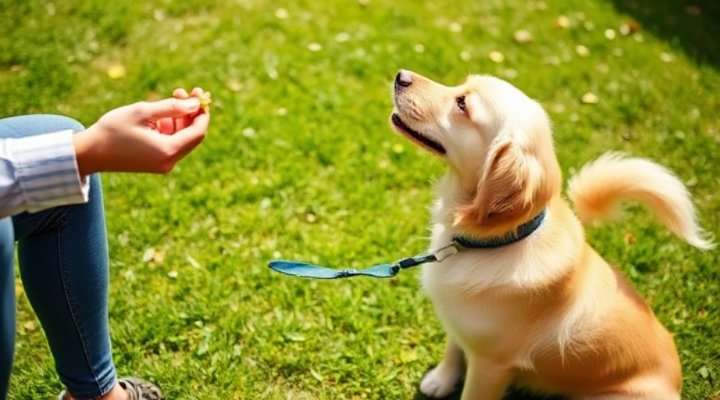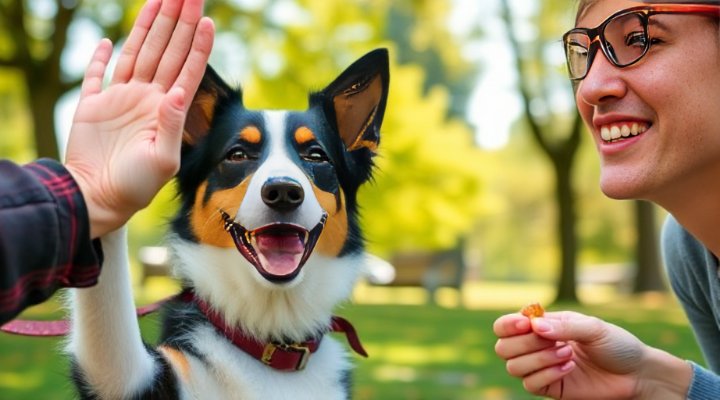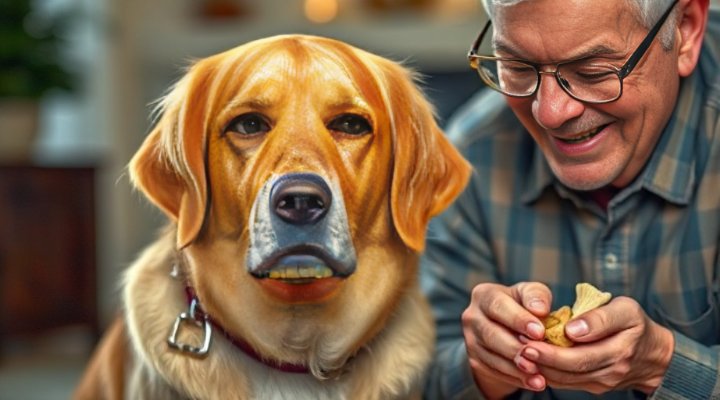Positive reinforcement dog training is revolutionizing how we teach our canine companions. Unlike traditional methods that focus on punishment, this approach builds confidence and strengthens the bond between you and your pet. Let’s explore why this method works so well and how you can implement it effectively.

The Science Behind Positive Reinforcement Training
Positive reinforcement works because it taps into your dog’s natural learning processes. When a behavior is followed by something pleasant (like a treat or praise), your dog is more likely to repeat that behavior. According to the American Veterinary Society of Animal Behavior, reward-based training creates fewer behavioral problems and results in more obedient pets.
For example, when teaching ‘sit,’ you would:
- Wait for your dog to sit naturally
- Immediately say “good sit!”
- Give a tasty treat
- Repeat this sequence consistently

Essential Tools for Positive Reinforcement
While you can start with just treats and praise, these tools can enhance your training:
- Clickers: Provides precise timing for marking good behavior (learn more about clicker training)
- High-value treats: Small, soft treats your dog loves
- Target stick: Helps teach complex behaviors
- Training pouch: Keeps treats handy
Remember, the best reward varies by dog. Some prefer food, while others respond better to toys or affection. Discover what motivates your pet through our guide on scientifically proven training methods.

Common Training Challenges Solved
1. Jumping on Guests
Instead of kneeing your dog (which can cause injury), try this positive approach:
- Teach an incompatible behavior like ‘sit’
- Reward heavily when guests arrive
- Practice with friends entering calmly
2. Leash Pulling
Traditional leash corrections can increase anxiety. Instead:
- Stop walking when the leash tightens
- Reward when the leash is loose
- Use high-value treats to keep attention
For more leash training tips, check out our step-by-step guide.

Advanced Positive Reinforcement Techniques
Once you’ve mastered basics, try these methods:
Shaping
Reward successive approximations toward the desired behavior. For example, when teaching ‘roll over’:
- Reward for lying down
- Then for turning the head
- Then for shoulder movement
- Finally for the complete roll
Capturing
Wait for your dog to offer a behavior naturally, then mark and reward it. This works well for behaviors like stretching or yawning.
The American Kennel Club recommends keeping sessions short (5-10 minutes) and ending on a positive note.

Positive Reinforcement for Different Life Stages
| Age | Training Focus | Tips |
|---|---|---|
| Puppies (8-16 weeks) | Socialization, basic commands | Use tiny treats, keep sessions very short |
| Adolescents (6-18 months) | Reliability, impulse control | Increase difficulty gradually |
| Adults (2-7 years) | Advanced skills, behavior refinement | Vary rewards to maintain interest |
| Seniors (7+ years) | Mental stimulation, gentle exercise | Adapt to physical limitations |
Remember, it’s never too late to start positive reinforcement training. Even older dogs can learn new tricks, as shown in our behavior specialist guide.
Keywords Related to Positive Reinforcement Dog Training
- Reward-based dog training
- Clicker training for dogs
- Force-free dog training
- Science-based dog training
- Positive behavior modification
- Dog training treats
- Marker training for dogs
- Relationship-based training
